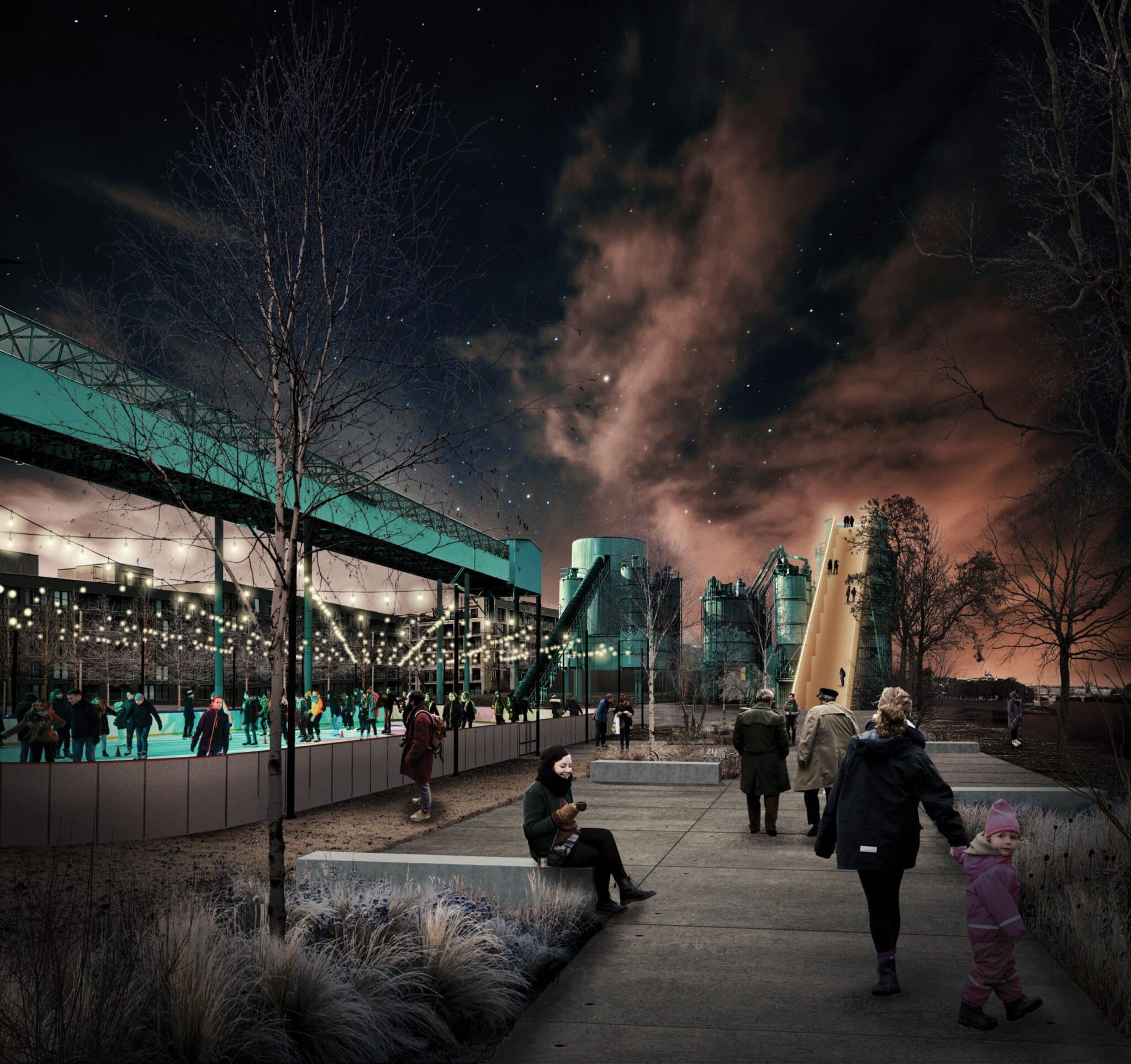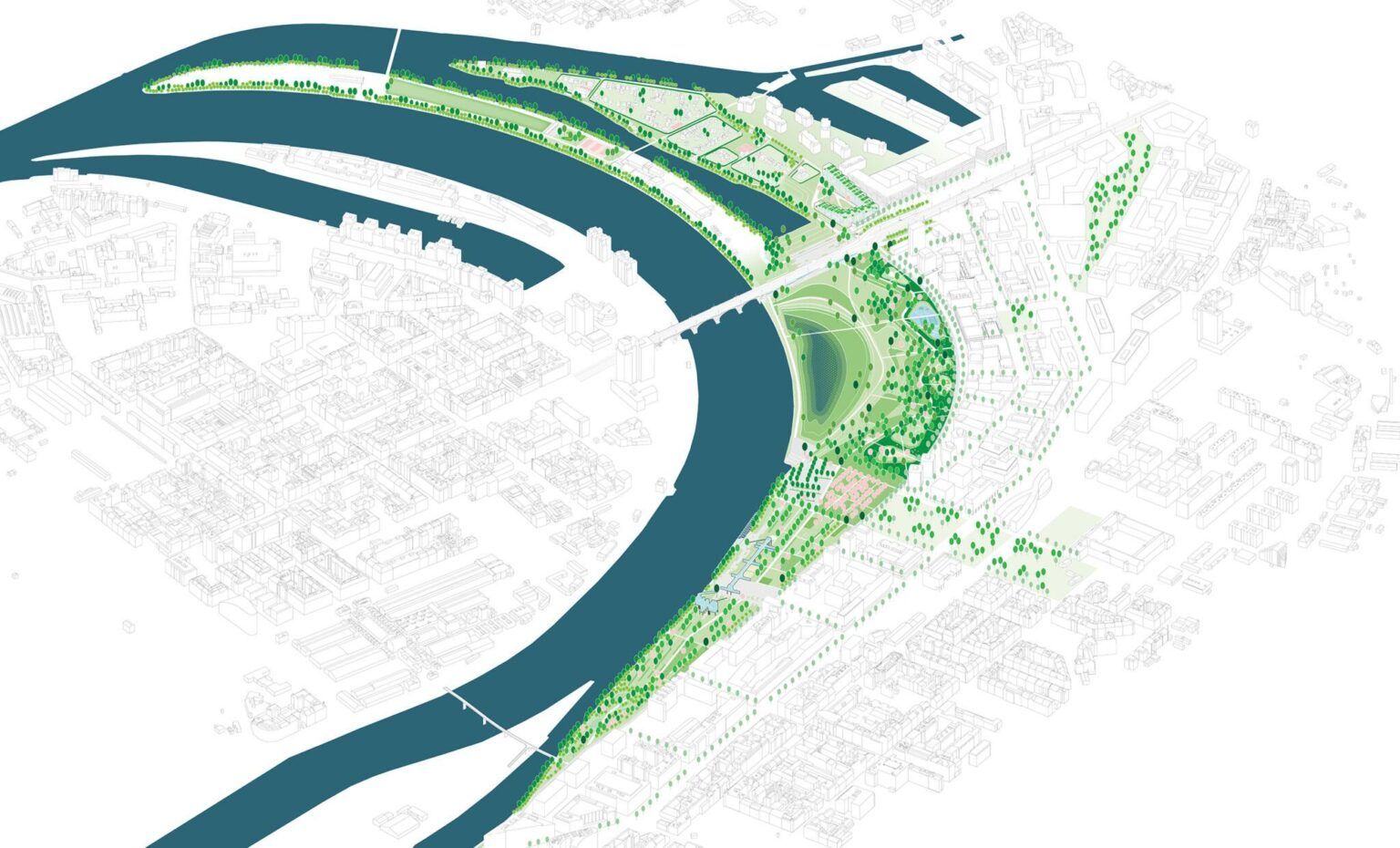
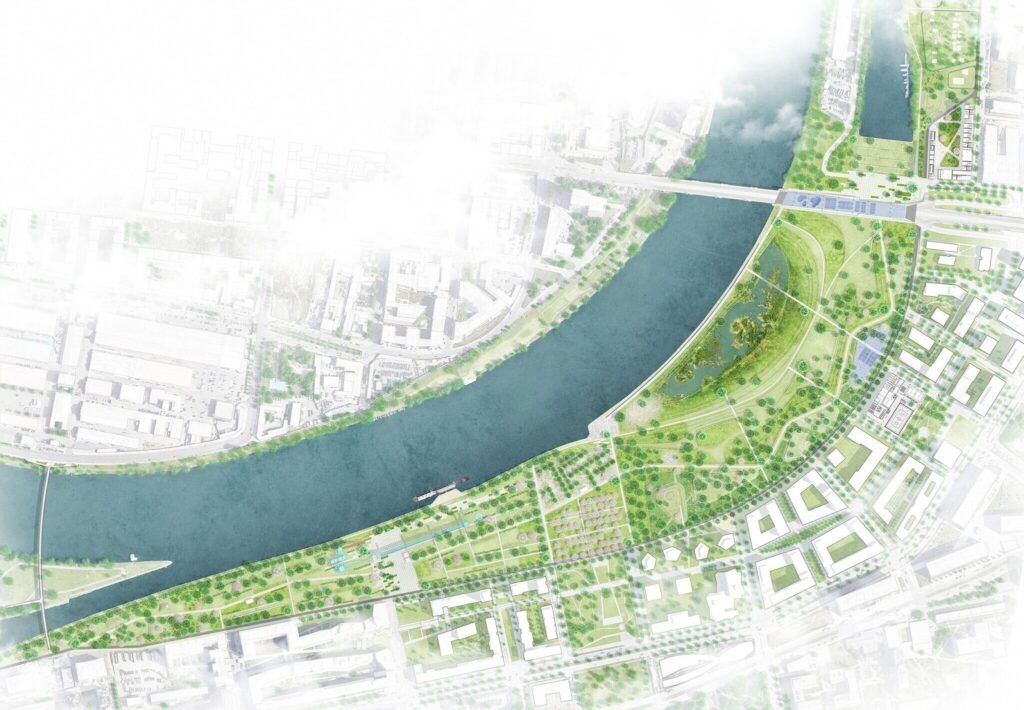
The Holešovice meander, part of the Vltava river, is a unique natural phenomenon in the Prague basin and all of Bohemia. Its generous space is unique across the entire watercourse and contrasts with the deeply enclosed ravines south and north of Prague. In the master plan, OMGEVING proposes to re-imagine the strength of the original landscape.
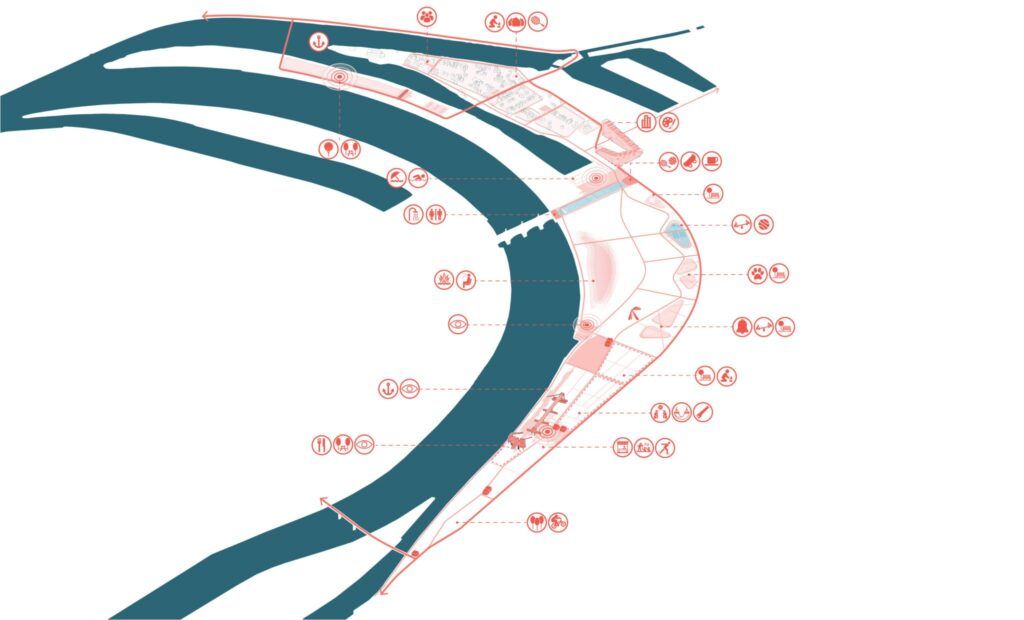
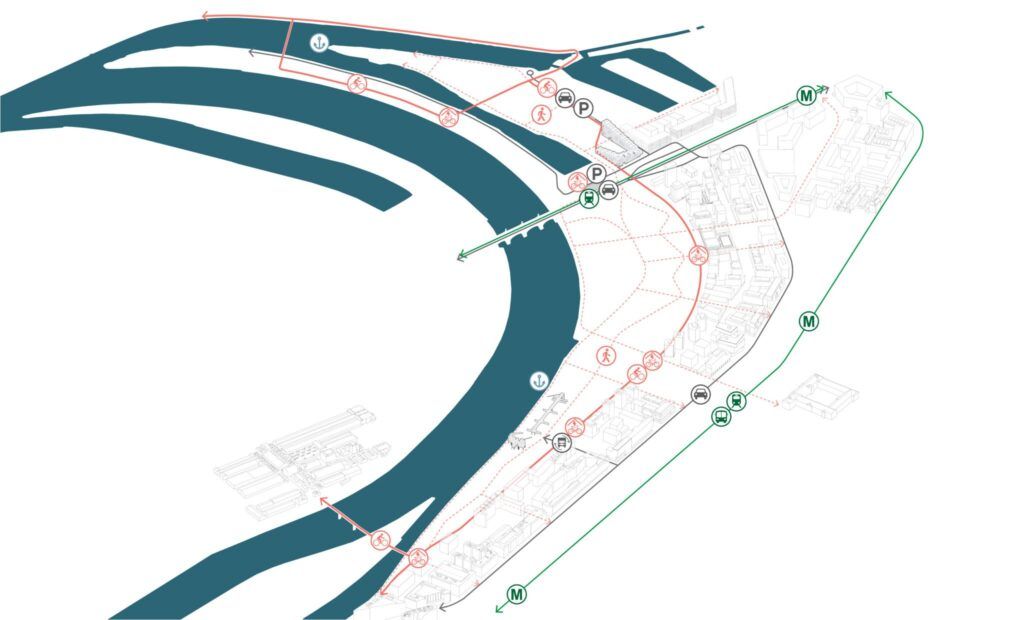
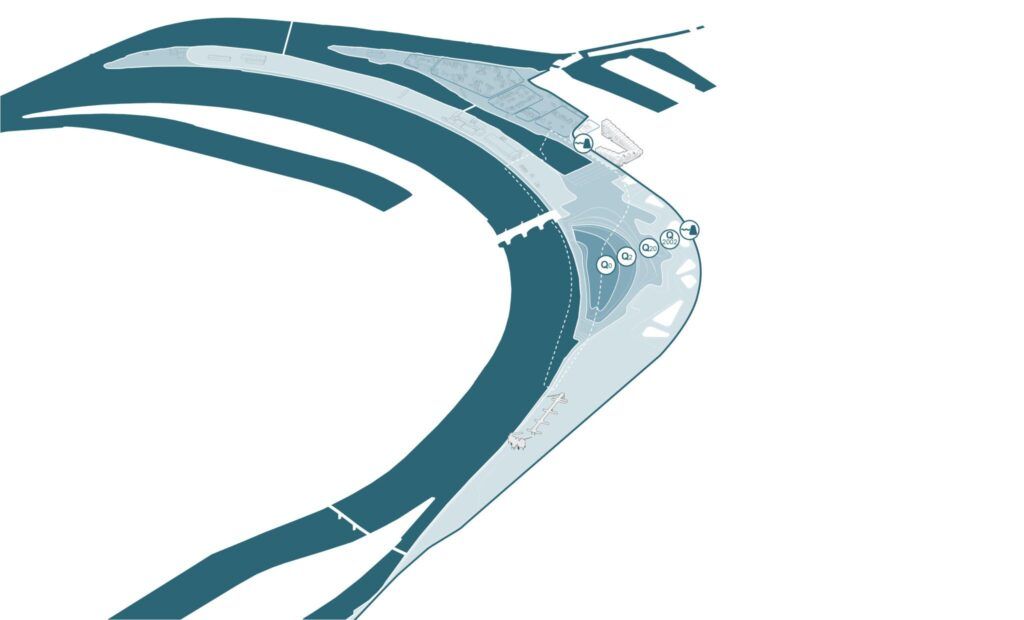
The new Rohan Island park will be a diverse park tailored to people and nature with an exciting mix between wild nature and post-industrial relics to which a pervasive, urban food strategy will be added. Not only the existing qualities, such as the unique location in the river landscape and historical relics, but also additional atmospheres, park typologies and programmes will make Libeň and Rohan Island a highly varied mosaic. It is intended that the park will bring natural elements close to the residential fabric and offer a wide range of sports and recreational opportunities for both schoolchildren, elderly people and everyone in between. To this end, integral accessibility, including for people with disabilities, is a key concern that has been incorporated into the plan.
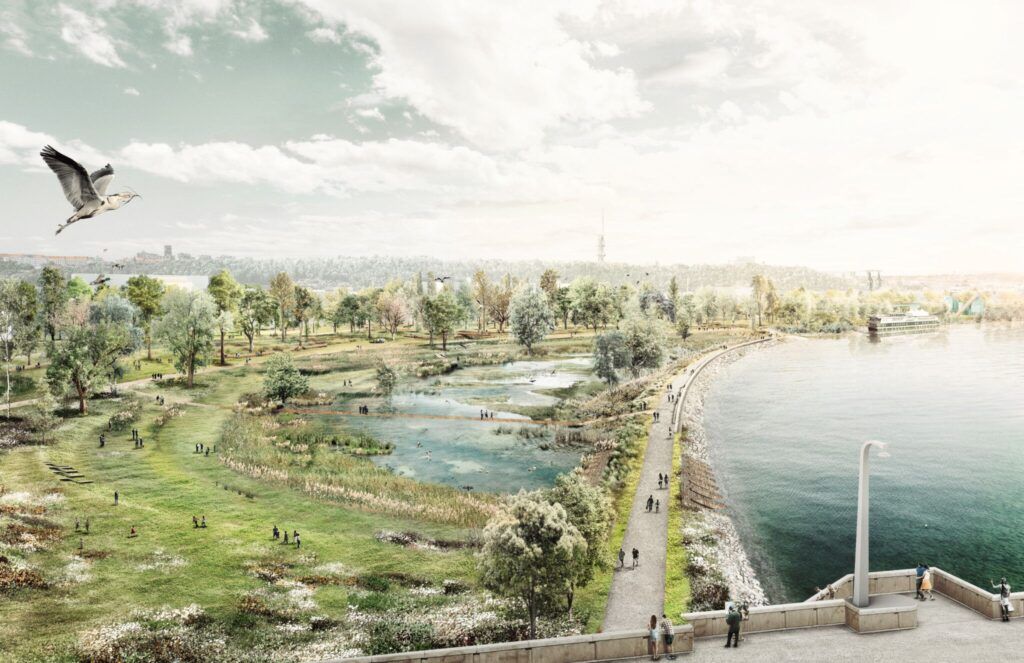
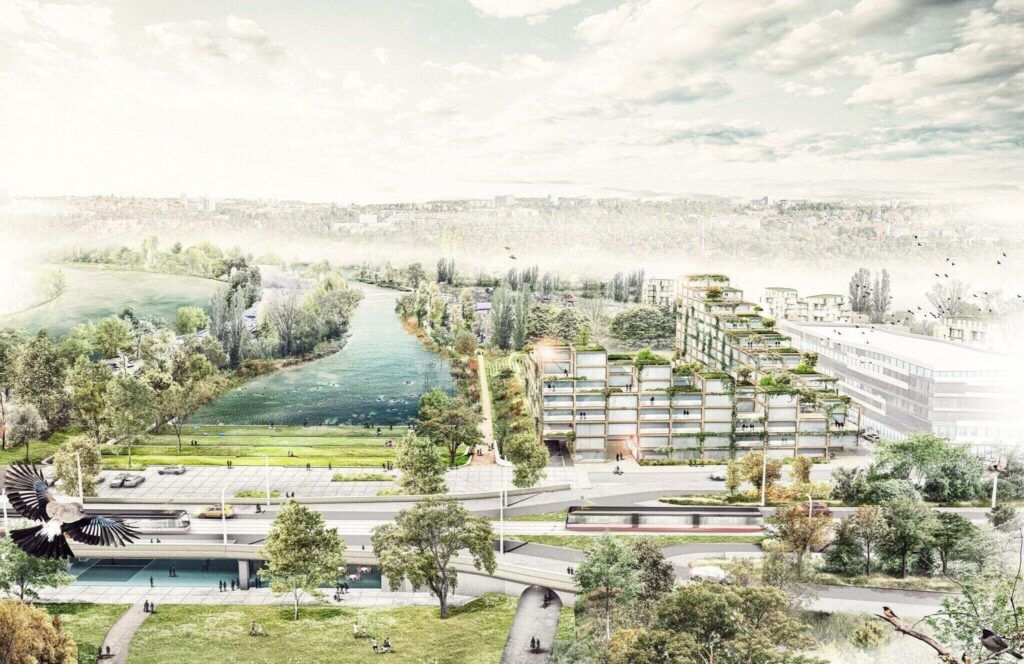
The proposed layout is based on a robust and flexible, spatial framework that encourages diverse temporary and permanent use of space. It envisages the development of a strong, new green structure combining multiple historical layers, with the river as the basis. By intervening in the existing topography, visual and physical contact with the river is restored and the low-lying vistas are recreated. The gradient in the site provides opportunities for greater biodiversity and the development of medium and high vegetation levels.
